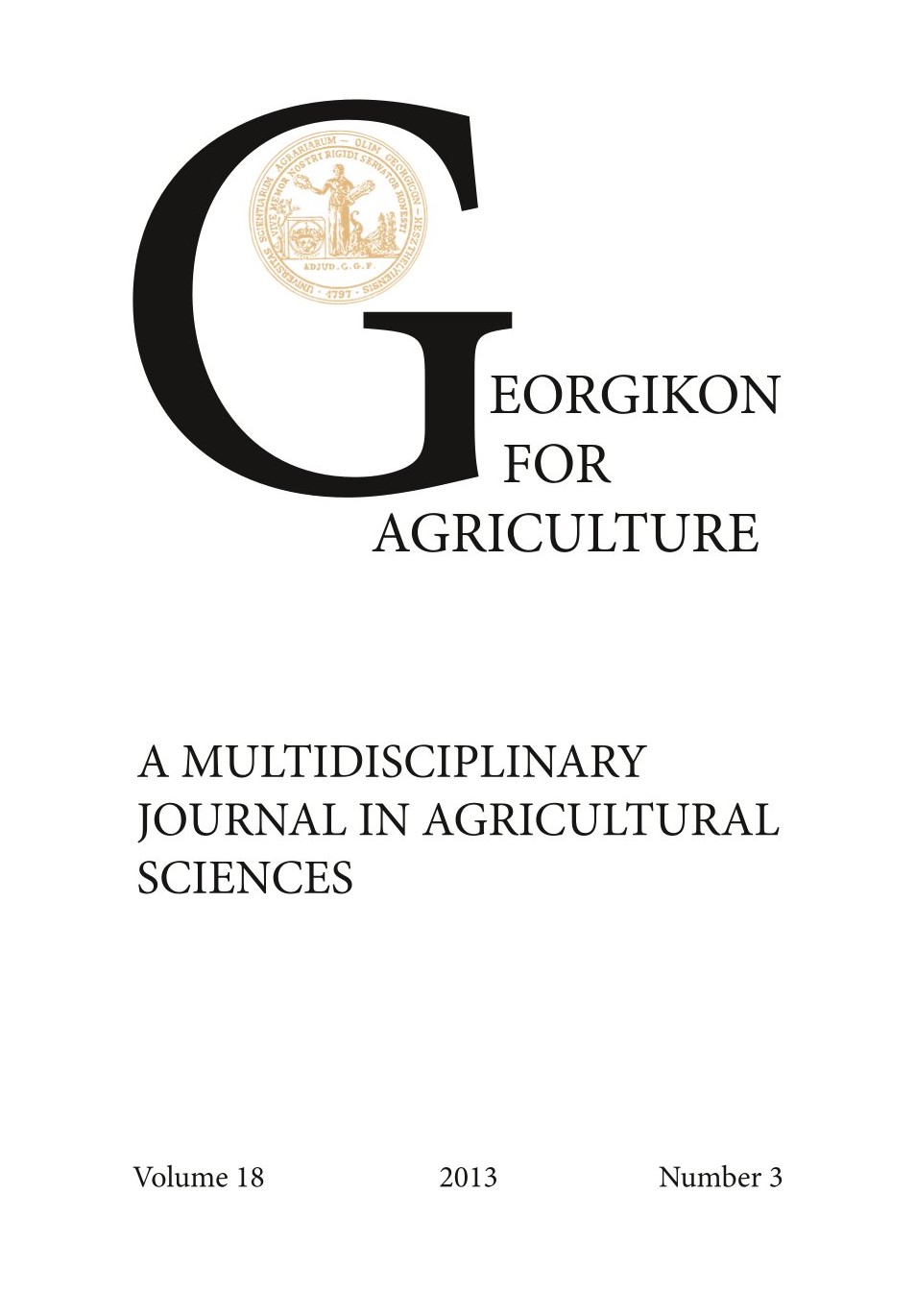Investigation of transport modelling and soil structure influencing effect of biodiesel by-product in agricultural soils
Keywords:
biodiesel by-product, leaching test, transport modeling, consolidometer test, shearing testAbstract
Our investigations are parts of a complex research work which have been started by Department of Soil Science and Agricultural Chemistry of Szent István University. This research work focuses on agricultural application of biodiesel by-product as an alternative nutrient and its effects on the cultigens and on the environment (Kovács et al., 2011a, Kovács et al., 2011b, Tolner et al., 2011, Kovács et al., 2012). The safety use of this material requires the accurate knowledge of its behavior thence several experiments were performed. The first step of our research was the transport modeling of the biodiesel by-product. The basics of models were column tests where the leaching of biodiesel by-product was investigated in presence of nitrate in different agricultural soils. During leaching tests the byproduct was substituted by glycerol because of its decisive glycerol content. The second part of our research was the geotechnical investigation of soil parameters. In these experiments the soil structure modifying effect of glycerol was determined. According to results of transport modeling the leaching of glycerol mainly depends on the soil type and on the presence of nitrate. The amount of washed-out glycerol is significantly high from sandy soils but it decreases by adding of nitrate. The soil structure influencing effect of glycerol was proven by geotechnical investigations. Changes of soil mechanical parameters were observed in cases where the soils were treated with glycerol.
References
Coyle, W. 2007. The Future of Biofuels: A global perspective - 2007 Amber Waves 6 Issue - November 2007 - Food Labels Influence Production Decisions. U.S. Department of Agriculture, Economic Research Service. 24–29.
Kovács, A., Czinkota, I., Tóth, J. 2012. Improving Acid Number Testing of Biodiesel Feedstock and Product. Journal of the American Oil Chemists Society. 89. 409–417. https://doi.org/10.1007/s11746-011-1929-2
Kovács, A., Czinkota, I., Vágó, I., Kovács, A. 2011a. Regulation of soil nitrogen supply by using glycerol as a biodiesel by-product. Növénytermelés. 60. 247–250.
Kovács, A., Tolner, L., Czinkota, I., Tóth, J. 2011b. Biodízel technológia hulladék alapanyagokból. Biodiesel production technologies on refuse basis. p. 106–112. In Gergely, S. (ed) Zöldenergia termelés és hasznosítás rendszere. Károly Róbert Főiskola, Gyöngyös, Hungary. 27.09.2011
Kovács, B. 2004 Hidrodinamikai és transzportmodellezés (Processing MODFLOW környezetben) I. egyetemi tankönyv, ME-SZTE-GÁMA-GEO, 159.
Lee, P. C., Lee, W. G., Lee, S. Y., Chang, H. N. 2001. Succinic acid production with reduced by-product formation in the fermentation of Anaerobiospirillum succiniciproducens using glycerol as a carbon source. Biotechnology & Bioengineering. 72. 41–48. https://doi.org/10.1002/1097-0290(20010105)72:1<41::AID-BIT6>3.3.CO;2-E
Tickell, J. 2003. From the fryer to the fuel tank. The complete guide to using vegetable oil as an alternative fuel. Joshua Tickell Media Production, 1000 Bourbon St. #354, New Orleans LA 70116. 165.
Tolner, L., Kovács, A., Kovács, A., Vágó, I., Czinkota, I. 2011. Ellentmondások a biodízelgyártás melléktermék mezőgazdasági hasznosíthatóságában. Contradictions in agricultural Utilization of biodiesel byproduct. p. 154–159. In Gergely, S. (ed.) Zöldenergia termelés és hasznosítás rendszere. Károly Róbert Főiskola, Gyöngyös, Hungary. 27.09.2011
Wilkie, A. C. 2008. Biomethane for Biomass, Biowaste, and Biofuels. p. 195–205. In Wall, J. et al. (ed) Bioenergy. ASM Press, 1752 N St., N.W., Washington, DC 20036-2904, U.S.A. https://doi.org/10.1128/9781555815547.ch16
Downloads
Published
Issue
Section
License
Copyright (c) 2013 Kántor Tamás, Tóth Márton, Kovács Balázs

This work is licensed under a Creative Commons Attribution-NonCommercial-NoDerivatives 4.0 International License.
Cikkre a Creative Commons 4.0 standard licenc alábbi típusa vonatkozik: CC-BY-NC-ND-4.0. Ennek értelmében a mű szabadon másolható, terjeszthető, bemutatható és előadható, azonban nem használható fel kereskedelmi célokra (NC), továbbá nem módosítható és nem készíthető belőle átdolgozás, származékos mű (ND). A licenc alapján a szerző vagy a jogosult által meghatározott módon fel kell tüntetni a szerző nevét és a szerzői mű címét (BY).




